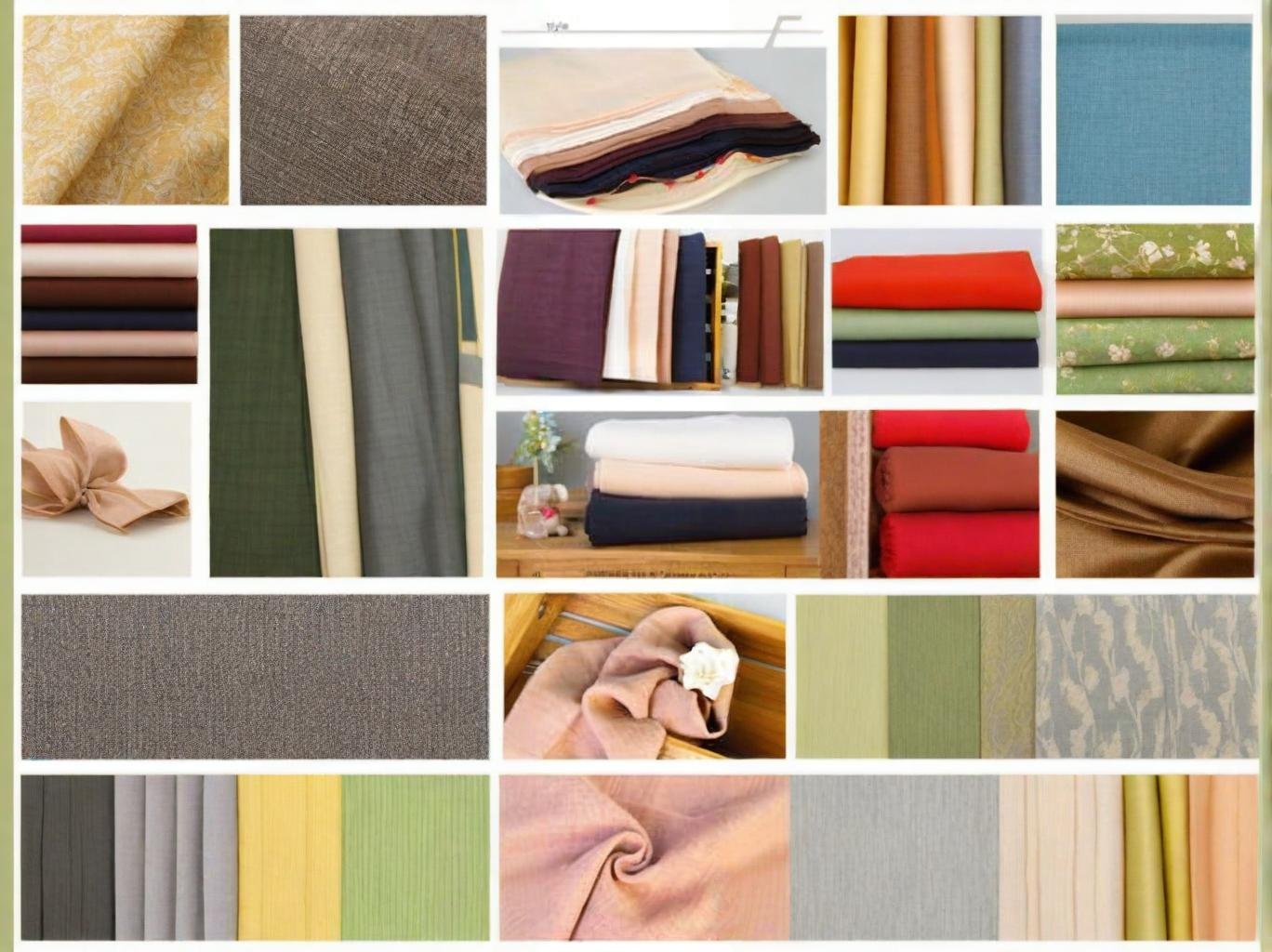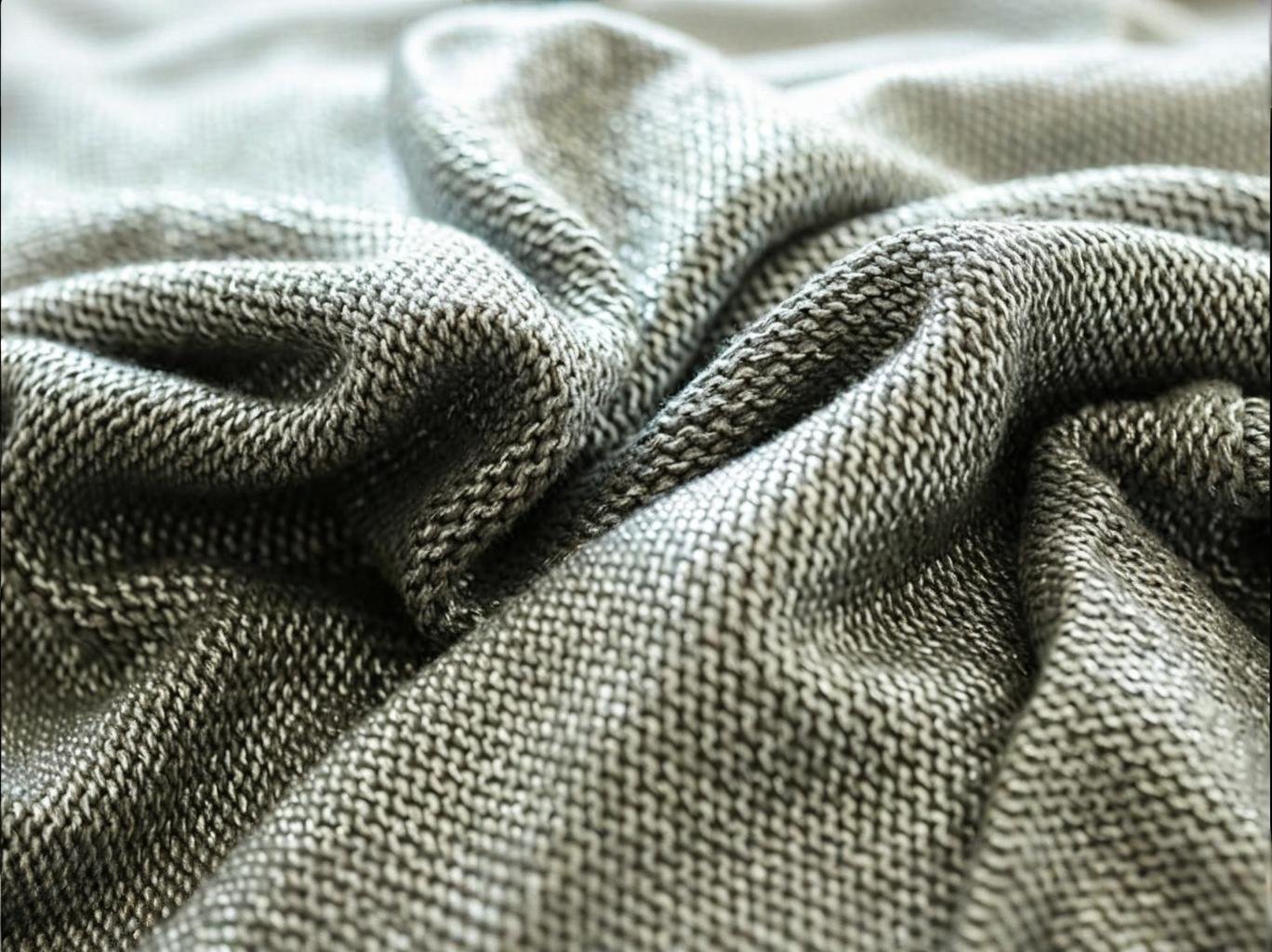Who Are The Top 3 Countries That Manufacture Clothes For The Us?

The global apparel industry is a multi-billion-dollar business, with the United States being one of the largest consumers of clothing worldwide. A significant portion of the clothes worn in the US is manufactured overseas. With a growing demand for affordable yet high-quality garments, the US turns to key manufacturing countries. But which countries dominate this sector, and what are the driving forces behind their success?
China, Vietnam, and Bangladesh are the three dominant countries that manufacture the majority of clothing for the US. These countries lead in terms of cost-efficiency, production capacity, and export volumes. China, with its highly developed infrastructure and low labor costs, remains the largest supplier. However, Vietnam and Bangladesh have emerged as key players due to their competitive pricing, labor force, and favorable trade agreements. Understanding the key factors that make these countries crucial to the US apparel market helps businesses optimize their sourcing strategies.
In this article, we will explore why China, Vietnam, and Bangladesh are the top three countries for manufacturing clothes for the US. We’ll also delve into the economic, social, and political factors that influence their roles in the global apparel supply chain. By examining their production capabilities, trade policies, and manufacturing advantages, we will uncover how these countries are shaping the future of the US clothing industry.
1. What Are the Key Factors That Influence Clothing Manufacturing for the US?
When discussing clothing manufacturing for the US, several factors come into play. These include labor costs, technological advancements, trade agreements, and market access. Countries that succeed in supplying the US with apparel need to offer a balance of cost-effectiveness and quality, while also adapting to global supply chain fluctuations. Key factors influencing clothing manufacturing for the US include cost of labor, technological capabilities, trade policies, and infrastructure. These elements determine a country’s competitiveness in the global apparel market.
The Driving Forces Behind Apparel Manufacturing
1.1. Labor Costs and Workforce Availability
- Labor cost remains one of the biggest drivers in apparel manufacturing. Countries with a large, affordable workforce are better equipped to produce clothes at competitive prices. For instance, China and Bangladesh have long been recognized for their low-cost labor, which has allowed them to dominate the US market.
- While Vietnam’s labor costs have risen slightly over the years, its workforce remains more affordable compared to developed countries, giving it a competitive edge in the global market.
1.2. Technological Advancements and Automation
- Countries that invest in modern technologies like automated cutting, sewing, and pattern-making have an advantage in meeting the demand for fast fashion. Vietnam, for instance, has seen significant improvements in its textile industry through the adoption of advanced machinery.
- Automation and technology-driven processes help manufacturers reduce reliance on low-cost labor, increase production efficiency, and improve product quality, all while keeping costs manageable.
1.3. Trade Agreements and Tariffs
- Trade agreements such as the US-China trade agreement and the Trans-Pacific Partnership (TPP) significantly impact the apparel supply chain. Vietnam’s inclusion in trade deals has allowed it to enjoy duty-free access to the US market, making it more attractive to apparel buyers.
- Tariffs imposed on Chinese-made goods have led to a shift in sourcing patterns, with US companies exploring alternatives like Bangladesh and Vietnam, where tariffs are lower.
2. Which Countries Are Leading the Global Apparel Manufacturing Industry?
The global apparel manufacturing industry is concentrated in a handful of countries, with China, Vietnam, and Bangladesh at the forefront of production for the US. These countries dominate due to their unique advantages in labor, cost-efficiency, infrastructure, and trade agreements. China, Vietnam, and Bangladesh are the leading countries in the global apparel manufacturing industry. Their advantages include low labor costs, efficient production capabilities, and favorable trade terms with the US.
Apparel Manufacturing Giants
2.1. China: The Dominant Apparel Manufacturing Hub
- China has long been the world’s largest supplier of apparel, providing a vast variety of clothing types to the US. China’s well-developed infrastructure, extensive supply chains, and vast labor force contribute to its dominance in the market. Even with rising labor costs, China remains a key player due to its ability to produce at scale.
- Key Advantages: China’s dominance lies in its ability to offer both cost efficiency and high-quality production, along with established relationships with fabric suppliers and leading-edge technologies in textile manufacturing.
2.2. Vietnam: A Fast-Growing Apparel Manufacturing Hub
- Over the last two decades, Vietnam has become a serious competitor in the global apparel market. While it remains smaller in scale compared to China, Vietnam has gained a reputation for producing high-quality garments at competitive prices. Its growth can be attributed to increased foreign investment, improved labor skills, and a favorable trade environment.
- Key Advantages: The adoption of advanced manufacturing technologies and participation in free trade agreements like the Comprehensive and Progressive Agreement for Trans-Pacific Partnership (CPTPP) has boosted Vietnam’s position as a leading apparel manufacturer for the US.
2.3. Bangladesh: A Cost-Effective Supplier
- Bangladesh is known for being one of the most cost-effective apparel manufacturers, offering competitive pricing while maintaining high production quality. The country is a major supplier of basic garments like t-shirts, jeans, and sweatshirts.
- Key Advantages: Bangladesh benefits from low labor costs, a large workforce, and favorable trade policies, such as duty-free access to the US market. Despite challenges related to working conditions and sustainability, it remains one of the largest suppliers of clothing to the US.
| Country | Key Strengths | Apparel Production Volume | Major Apparel Exports |
|---|---|---|---|
| China | Infrastructure, labor force, tech | Largest global supplier | Jackets, pants, shirts |
| Vietnam | Cost efficiency, free trade deals | Fast-growing, high-quality | Sportswear, footwear |
| Bangladesh | Low labor costs, large workforce | Second-largest in exports | T-shirts, jeans |
2.4. Real-World Example: China’s Ongoing Dominance
Despite trade tariffs and increasing production costs, China continues to be the largest supplier of garments to the US. Fashion brands and retailers continue to source from China due to its mass production capabilities and established supply chains. For instance, a global retailer consistently relies on Chinese manufacturers to fulfill bulk orders of basic clothing items, underscoring China’s central role in the apparel industry.
3. How Does China Dominate the US Clothing Supply Chain?
China has long held the title of being the largest supplier of apparel to the US, dominating the clothing manufacturing industry due to its combination of cost-effective production, advanced infrastructure, and a robust labor force. Despite challenges such as rising labor costs and increasing tariffs, China’s manufacturing strength continues to fuel its position as the leader in global apparel production. China dominates the US clothing supply chain due to its advanced manufacturing infrastructure, large workforce, and ability to produce at scale, maintaining its role despite rising costs and tariffs.
China’s Role in the US Clothing Supply Chain
3.1. Manufacturing Infrastructure and Technological Advancements
- China is known for its world-class manufacturing infrastructure. From textile production facilities to advanced garment factories, the country has established itself as a global manufacturing powerhouse. The scale and efficiency of China’s facilities allow it to produce massive quantities of apparel quickly and at relatively low costs.
- The adoption of technology in China’s apparel industry, including the use of automated production lines, advanced cutting machines, and robotic sewing, further boosts its competitive edge. This technological progress allows for high-volume production, quick turnaround times, and consistent quality control, essential for fast fashion and bulk orders.
3.2. Labor Force and Cost-Effectiveness
- China’s labor force is vast, skilled, and well-trained in the techniques necessary for large-scale garment production. While labor costs in China have been increasing over the years, the overall cost-efficiency remains competitive due to the scale of operations and manufacturing expertise.
- Despite the rise in labor costs, China has managed to maintain its status as a cost-effective supplier by optimizing production efficiency and leveraging economies of scale. This enables Chinese manufacturers to deliver affordable clothing with consistent quality at competitive prices.
3.3. Trade Policies and Challenges
- US-China trade relations have impacted the flow of apparel from China to the US, with tariffs being imposed on a wide range of Chinese-made goods. However, despite these tariffs, China remains the largest apparel supplier due to its extensive production capabilities and robust supply chains.
- For many US apparel companies, the advantages of speed, quality, and volume often outweigh the impact of tariffs, making China an essential source for bulk production of apparel. Additionally, Chinese manufacturers have adapted by seeking ways to minimize tariff impacts, such as shifting some production to neighboring countries or investing in local facilities.
3.4. Real-World Example: China’s Role in Fast Fashion
A leading fast-fashion retailer consistently sources large quantities of garments from China due to its low production costs, high scalability, and ability to deliver mass-produced fashion items quickly. Despite trade tensions and tariffs, the company has continued to prioritize Chinese manufacturers because of their production speed and expertise in meeting high-volume demands. This is a clear example of China’s dominance in the global apparel supply chain.
4. Why Is Vietnam Gaining Ground in Apparel Manufacturing for the US?
Vietnam has emerged as a key competitor to China in apparel manufacturing, gaining significant ground in recent years due to its cost-efficiency, skilled workforce, and the benefit of trade agreements that grant it preferential access to the US market. As US companies seek to diversify their supply chains, Vietnam has positioned itself as a critical supplier for high-quality, affordable garments. Vietnam is gaining ground in apparel manufacturing for the US due to its affordable labor, skilled workforce, and trade agreements that provide duty-free access to the US market, making it a key player in the global apparel supply chain.
Vietnam’s Growth in the US Apparel Market
4.1. Competitive Labor Costs and Skilled Workforce
- Vietnam has become an attractive destination for apparel manufacturing due to its low labor costs and a skilled workforce that is proficient in garment production techniques. The country’s workforce is known for its discipline, productivity, and quality of workmanship, which make it an ideal location for high-quality clothing production.
- While labor costs in Vietnam have increased slightly over the years, they remain significantly lower than in other Asian countries and still offer a cost-effective alternative to China.
4.2. Free Trade Agreements and Market Access
- Vietnam benefits from several free trade agreements (FTAs), including the Comprehensive and Progressive Agreement for Trans-Pacific Partnership (CPTPP) and the Vietnam-U.S. Trade Agreement. These agreements provide duty-free access to the US market, making Vietnamese-made apparel more affordable compared to Chinese imports, which are subject to higher tariffs.
- In 2020, Vietnam’s apparel exports to the US grew by 15%, showcasing the country’s rising prominence as a key supplier of garments for the US.
4.3. Manufacturing Capabilities and Quality Control
- Vietnam’s manufacturing capabilities are on par with those of other major apparel manufacturers. The country is known for producing high-quality garments in categories such as activewear, sportswear, and casual clothing. Companies in Vietnam specialize in both small-batch, high-quality production and large-scale manufacturing for fast fashion.
- Furthermore, Vietnamese factories are increasingly investing in advanced technology and automation to improve production efficiency and ensure high levels of quality control.
4.4. Real-World Example: Vietnam’s Appeal for US Activewear Brands
A major activewear brand switched part of its production from China to Vietnam to benefit from the country’s cost-effective manufacturing and the US-Vietnam Trade Agreement. By doing so, the brand managed to reduce production costs by 10% while maintaining high-quality standards for its athleisure line. This shift demonstrates Vietnam’s growing role as a key player in global apparel manufacturing.
5. What Role Does Bangladesh Play in Supplying Clothes to the US Market?
Bangladesh has emerged as one of the largest apparel exporters to the US, capitalizing on its low labor costs, skilled workforce, and efficient production capabilities. The country specializes in producing affordable yet high-quality garments, particularly in categories such as basic clothing, t-shirts, jeans, and sweatshirts. Bangladesh is a major supplier of affordable, high-quality apparel to the US, driven by low labor costs, a skilled workforce, and efficient manufacturing processes.
Bangladesh’s Competitive Edge in Apparel Manufacturing
5.1. Low Labor Costs and Large Workforce
- Bangladesh benefits from having one of the lowest labor costs in the world, which is a significant advantage in the highly competitive apparel manufacturing industry. The country’s skilled labor force, many of whom are trained in garment production techniques, is crucial to its success in supplying the US market.
- The size of Bangladesh’s workforce and its ability to deliver high-volume production at low cost make it an attractive manufacturing hub for both small-scale and large-scale apparel production.
5.2. Trade Agreements and Market Access
- One of Bangladesh’s major advantages is its trade agreement with the US, which allows it to export garments duty-free under the Generalized System of Preferences (GSP) program. This preferential trade access has contributed to the country’s growing role as a leading exporter of apparel to the US.
- In 2020, Bangladesh’s apparel exports to the US reached a significant \$6.9 billion, highlighting its position as the second-largest supplier of clothing to the US, after China.
5.3. Quality Control and Manufacturing Capabilities
- While Bangladesh is known for its low labor costs, it has also made significant strides in improving manufacturing quality. The country’s garment factories are increasingly adopting modern production techniques and quality control processes to ensure that the apparel meets global standards.
- Bangladesh is particularly strong in the production of basic garments such as t-shirts, jeans, and shirts, where cost-effectiveness is key, but high quality is also expected.
5.4. Real-World Example: Bangladesh’s Role in US Fast Fashion
One of the largest US fast fashion brands shifted a significant portion of its basic clothing production to Bangladesh. This move allowed the company to produce high-quality, affordable garments at scale, maintaining competitive pricing despite rising global apparel costs. By leveraging Bangladesh’s cost-effective manufacturing and efficient production capabilities, the brand maintained its market dominance while meeting the growing demand for affordable fashion.
6. How Has Global Trade Policy Affected Clothing Manufacturing for the US?
Global trade policies, such as free trade agreements, tariffs, and import duties, have a significant impact on the countries that manufacture clothing for the US. Changes in these policies can either increase or decrease the cost of goods imported into the US, influencing the sourcing strategies of US apparel companies. Global trade policies, such as free trade agreements and tariffs, greatly influence the countries that supply clothing to the US, affecting manufacturing costs, sourcing decisions, and trade relationships.
The Impact of Global Trade on Apparel Manufacturing
6.1. The Role of Free Trade Agreements (FTAs)
- Free Trade Agreements (FTAs) like the US-Mexico-Canada Agreement (USMCA) and Trans-Pacific Partnership (TPP) have played a pivotal role in shaping apparel manufacturing for the US. These agreements allow countries to export garments duty-free, making it cheaper for US companies to source raw materials and finished products.
- Vietnam, for example, has significantly benefited from the Comprehensive and Progressive Agreement for Trans-Pacific Partnership (CPTPP), which provides duty-free access to the US market and has boosted its apparel export volumes.
6.2. Tariffs and Trade Tensions with China
- The US-China trade war and the imposition of tariffs on Chinese-made goods, including clothing, have prompted many US companies to look for alternative manufacturing countries such as Vietnam, Bangladesh, and India.
- The increased tariffs on Chinese apparel led to a shift in sourcing patterns, with many US brands moving production to countries that either have lower tariffs or are covered by free trade agreements.
6.3. Impact of the US-China Trade War on US Apparel
- The US-China trade war resulted in significant shifts in sourcing as US brands sought alternatives to Chinese suppliers. Bangladesh and Vietnam emerged as key competitors to China, offering lower tariff rates and competitive labor costs.
- Many companies are shifting their supply chains to countries like Vietnam, where tariffs are lower, and manufacturers can continue to produce affordable clothing for the US market.
6.4. Real-World Example: Impact of Trade Policy on Sourcing Strategies
A well-known US retail giant shifted a significant portion of its garment production to Vietnam due to the imposition of tariffs on Chinese-made goods. The move helped the retailer reduce its import costs by 20%, taking advantage of Vietnam’s duty-free status under trade agreements. This shift highlights how trade policy directly impacts manufacturing decisions in the global apparel supply chain.
7. Are There Other Countries Emerging as Key Players in US Apparel Manufacturing?
While China, Vietnam, and Bangladesh continue to dominate the apparel manufacturing industry, other countries are beginning to emerge as strong competitors. Factors like lower production costs, trade agreements, and the growing trend of sustainability are reshaping the global apparel landscape. Countries like India, Cambodia, and Pakistan are emerging as key players in the US apparel supply chain, offering competitive labor costs, skilled labor forces, and increased production capabilities.
Emerging Apparel Manufacturing Countries
7.1. India: A Growing Apparel Exporter
- India is positioning itself as a major player in the global apparel market due to its large, skilled labor force, and competitive wages. With a growing emphasis on textile production and the government’s push for economic reforms, India is quickly becoming a key supplier for the US.
- India has historically specialized in cotton-based fabrics, but in recent years, it has diversified its offerings to include a wider range of synthetic fabrics and high-quality garments.
7.2. Cambodia: Affordable Labor and a Growing Industry
- Cambodia offers one of the lowest labor costs in the Southeast Asia region, making it an attractive destination for apparel manufacturing. The country has seen a rise in foreign direct investment (FDI) in its garment sector, with several US-based companies opting to source their products from Cambodia.
- Cambodia is also increasingly participating in free trade agreements, further improving its ability to supply affordable apparel to the US market.
7.3. Pakistan: Leveraging Trade Agreements
- Pakistan is gaining momentum as a textile producer and garment exporter. Its membership in trade agreements such as the Generalized System of Preferences (GSP) allows it to export duty-free apparel to the US, making it an affordable option for US retailers.
- The country has made significant strides in its manufacturing capacity, particularly in woven garments and denim production, and is becoming a strong competitor for low-cost clothing production.
7.4. Real-World Example: India’s Growth in the US Market
A US-based fashion retailer recently expanded its supply chain to include India as a primary sourcing country. The company benefited from India’s low labor costs and access to high-quality cotton textiles, allowing it to produce budget-friendly clothing for its customers. With India’s improved infrastructure and skilled workforce, the retailer was able to maintain its competitive edge in the US market.
8. How Can Businesses Leverage These Key Manufacturing Countries for Cost Efficiency?
For businesses sourcing apparel for the US market, leveraging the advantages of countries like China, Vietnam, Bangladesh, and emerging players like India or Cambodia can be the key to maintaining cost efficiency. Understanding the trade policies, production capacities, and labor dynamics in these countries helps companies make strategic decisions to optimize their sourcing strategies. Businesses can leverage countries like Vietnam, Bangladesh, and India for cost-efficient apparel manufacturing by taking advantage of trade agreements, low labor costs, and high-quality production capabilities.
Strategies for Cost-Efficient Apparel Sourcing
8.1. Diversifying Sourcing to Minimize Risks
- Diversification is a key strategy for businesses looking to reduce risk and take advantage of cost efficiencies. By spreading their sourcing operations across multiple countries, companies can mitigate risks like supply chain disruptions, tariffs, and trade policy changes.
- For example, a US retailer sourcing from China for basic garments may consider Vietnam for higher-end, specialized garments to balance costs and quality. This allows companies to optimize their overall production costs and mitigate reliance on any single country.
8.2. Leveraging Trade Agreements and Tariff Relief
- US companies should take full advantage of trade agreements such as the CPTPP, USMCA, and GSP to reduce tariffs and secure duty-free access for their apparel imports. Countries like Vietnam and Bangladesh benefit from these agreements, allowing businesses to source high-quality apparel at lower costs.
- Properly navigating trade policies and import duties can significantly reduce overall production costs, making it more feasible for businesses to maintain affordable pricing while ensuring quality production.
8.3. Real-World Example: Leveraging Vietnam’s Trade Benefits
A global activewear brand based in the US increased its sourcing from Vietnam after US-Vietnam trade agreements enabled them to import garments duty-free. The company capitalized on Vietnam’s cost-effective labor and high-quality production while avoiding the high tariffs that were being imposed on Chinese-made goods. This allowed the brand to remain competitive while offering affordable and high-performance activewear.
The Future of Apparel Manufacturing for the US
The future of clothing manufacturing for the US is shaped by multiple factors including global trade agreements, labor dynamics, and manufacturing capabilities in emerging markets. China, Vietnam, and Bangladesh will continue to be key players, but countries like India, Cambodia, and Pakistan are emerging as strong competitors. Businesses that understand the nuances of each country’s advantages, trade policies, and production capabilities can create cost-efficient and sustainable sourcing strategies.
At SzoneierFabrics, we are committed to providing high-quality, customized fabric solutions for brands looking to optimize their sourcing strategies. Whether you need low-MOQ production, fast sample development, or customized fabrics, we are ready to assist in bringing your product ideas to life.
Ready to take your manufacturing to the next level? Contact SzoneierFabrics for custom samples, expert advice, and efficient production solutions tailored to your business needs.
Can't find the answers?
No worries, please contact us and we will answer all the questions you have during the whole process of bag customization.
Make A Sample First?
If you have your own artwork, logo design files, or just an idea,please provide details about your project requirements, including preferred fabric, color, and customization options,we’re excited to assist you in bringing your bespoke bag designs to life through our sample production process.



